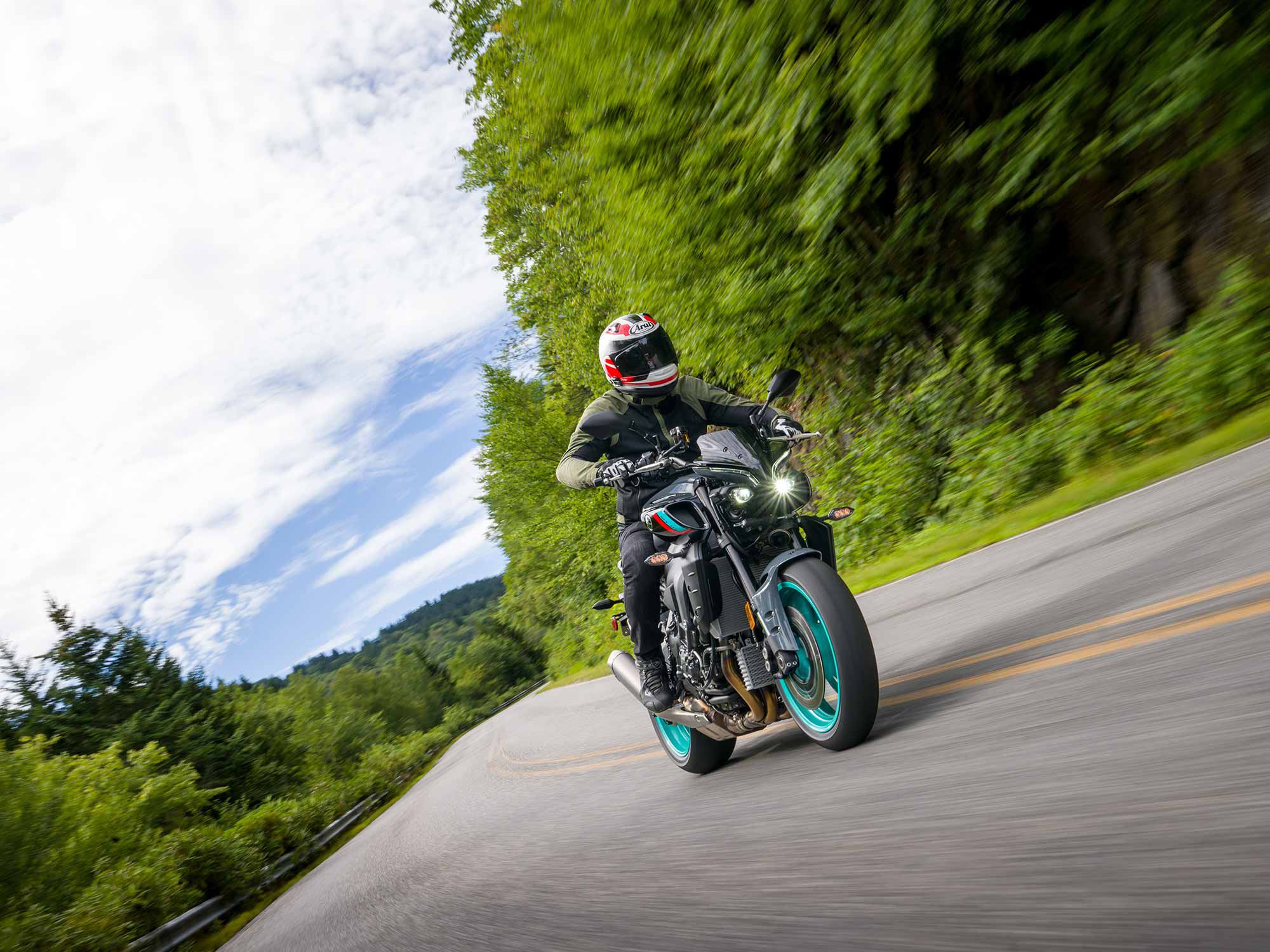
For the 2022 model year Yamaha offers a new and improved MT-10, its liter-class naked bike. Previously known as the FZ-10, and the FZ1 before that, the MT-10′s name was changed so that Yamaha could fit it into the global Masters of Torque/MT model family. The MT-10 slots in above the new rider-friendly MT-03 and MT-07, both with parallel-twin power, and the inline-three MT-09.
Editor’s note: We previously featured this bike during the 2022 Yamaha MT-10 Review, 2022 Yamaha MT-10 First Look Preview, and 2022 Yamaha MT-10 First Ride Review articles. Additionally, you can read about its predecessor in the 2020 Yamaha MT-10 MC Commute Review article and video.
We love the reshaped front end, with its Transformer-esque LED positioning lights and ultrabright LED headlamps. Other improvements include unique acoustic channels built into the top of the fuel tank. These vents allow the awesome sound of the 998cc CP4 engine to be focused right on the rider.
Yamaha has been manufacturing its crossplane CP4 engine for over a decade; its original purpose when it debuted was to offer added track ability. Today’s version feels like a cross between an old V-twin-style sportbike and a screaming inline-four, with a unique exhaust note. There are a lot of great-sounding motorcycles out there, and this CP4 engine ranks right up at the top. The sound when riding is tremendous, thanks to the new ducts, and those hearing this bike go by them won’t soon forget. We’re not sure how Yamaha Motor got this bike past sound and emissions testing, as it sounds downright mean. To the testers, it sounded nearly as awesome as a Tuono V4 1100, though with a character all its own; frankly, we love it. Anyway, the CP4, Yamaha’s 998cc liquid-cooled inline-four, is the same crossplane-equipped engine as in the YZF-R1 minus the titanium valve train and connecting rods. This version is now Euro 5 compliant thanks to modified intake and the exhaust systems, which incidentally help make the induction system more rowdy.
Improvements include the radial-mount master cylinder that replaces the axial component on the predecessor, which wasn’t great; we’re big fans of this Brembo unit. The rear brake benefits from a Brembo-sourced master cylinder as well.
The MT-10 also gets the 2015-generation Yamaha YZF-R1 color TFT dash display. It’s a nice improvement from the old monochrome LCD setup, but realistically, this dash display is too small and the multi-wheel switch gear button is too old and clunky. The control wheel is easy to use, and you can make adjustments while you’re riding, which we like. But the tactile response of this control wheel (right-hand side) is sloppy. It doesn’t offer a good tactile feel, so it’s hard to make micro adjustments, especially with gloves. Yamaha really needs to step it up in this department. That said, we do like the handy 12-volt power port located right underneath the dash display; it makes it easy to fit a USB-style charger for gadgets.
Cruise control returns, now including a manually adjustable speed limit function allowing the rider to set their maximum speed, an upgrade from Europe where speed cameras are everywhere. Small changes include the one-tooth-smaller rear final drive sprocket, which results in a mite slower acceleration but also lower revs during top gear cruises on the freeway. Lastly, Yamaha fitted the updated throttle tube system, first unveiled on the 2020 YZF-R1M, for improved throttle response.
We’re big fans of the MT-10 the last time we operated it during the 2020 Yamaha MT-10 MC Commute Review, but there were some squawks with it. Yamaha has addressed many of these bugs.
In the electronics department the MT-10 has adopted the R1′s electronics package. Four combined engine power/throttle response modes let the rider tailor the MT’s acceleration; PWR 1 was our favorite, offering maximum power and the most aggressive throttle response. This setting benefits from the updated function of Yamaha’s Accelerator Position Sensor with Grip (APSG). Yamaha has also provided the ability to adjust traction control, slide control, and wheelie (Yamaha calls it lift) control. All of these systems are enabled by an IMU-powered electronic system originally fitted on the 2015 YZF-R1; the previous MT-10 relied on Yamaha’s older 2012-generation R1 system.
The electronics also benefit from adjustable engine-brake control, allowing riders to dial in deceleration for more or less engine-braking effect; we generally like a moderate level of engine-brake during street rides to slow the bike without relying solely on the brakes, whereas at the track we find less engine-braking desirable. Luckily, the choice is the rider’s with this feature.
Cornering ABS is now included, although Yamaha doesn’t call it that. The system employs lean angle-sensitive ABS in the Brake Control 2 mode (less aggressive setting); in the more aggressive Brake Control 1 mode, lean-sensitive brake ABS is deactivated. As usual, Yamaha’s ABS programming is definitely on the conservative side, especially in comparison to its European-made equipment. If you’re looking for a motorcycle that doesn’t flirt with the ABS a lot when you’re using the brakes aggressively, the MT-10 is not for you.
The MT-10 weighs in at 467 pounds with a full 4.5 gallons of premium unleaded, about 4 pounds heavier than last year’s bike, but it wears its weight well. The MT-10′s chassis is very well balanced and nimble, very ready to put where you want. The ergonomics aren’t overly aggressive. Three-way-adjustable suspension with preload adjusters atop each fork cap make tweaking handling based on preference easy. We appreciate the suspension’s optimum pitch control; the bike goes over bumps nicely without too racy of a ride. While we love Yamaha’s YZF-R1, it’s downright uncomfortable to ride on the street because the suspension setup is so rigid. This MT has a little bit more give, perfect for street riders.
Overall we like what Yamaha’s done with the ‘22 version of the MT-10. We like the styling, we like the R1-based electronics; it’s all a nice step up, especially for track riders; street riders may find this upgrade less of a big deal. So would we pony up $13,999 for this bike? If we were looking for a high-end, liter-class naked, this would be on our shopping list. We really like the R1-sourced engine and its more rambunctious character and, especially, sound. Still, at another $1,000 over the previous MT-10, if we owned the old model, we wouldn’t replace it with this version. The upgrades simply aren’t big enough to justify it. But if we were coming from an MT-07 or MT-09, this would be a great step up.
Gear Box
Helmet: Arai Signet-X
Jacket: Dainese Sevilla Air
Pant: Dainese Tex
Gloves: Racer Guide
Boots: TCX Rush 2 Air
2022 Yamaha MT-10 Technical Specifications and Price
| PRICE | $13,999 |
| ENGINE | 998cc, DOHC, liquid-cooled, inline 4-cylinder; 16 valves |
| BORE x STROKE | 79.0 x 50.9mm |
| COMPRESSION RATIO | 12.0:1 |
| FUEL DELIVERY | Fuel injection, ride-by-wire |
| CLUTCH | Wet, multiplate slipper/assist |
| TRANSMISSION/FINAL DRIVE | 6-speed/chain |
| FRAME | Aluminum Deltabox |
| FRONT SUSPENSION | 43mm KYB, fully adjustable; 4.7 in. travel |
| REAR SUSPENSION | KYB piggyback shock, fully adjustable; 4.7 in. travel |
| FRONT BRAKES | 4-piston calipers, dual 320mm discs w/ ABS |
| REAR BRAKE | 2-piston Nissin caliper, 220mm disc w/ ABS |
| WHEELS, FRONT/REAR | Alloy 5-spoke; 17 x 3.5 in. / 17 x 6.0 in. |
| TIRES, FRONT/REAR | Bridgestone Battlax Hypersport S22; 120/70-17 / 190/55-17 |
| RAKE/TRAIL | 24.0°/4.0 in. |
| WHEELBASE | 55.3 in. |
| SEAT HEIGHT | 32.9 in. |
| FUEL CAPACITY | 4.5 gal. |
| CURB WEIGHT | 467 lb. |
| WARRANTY | 12 months, limited |
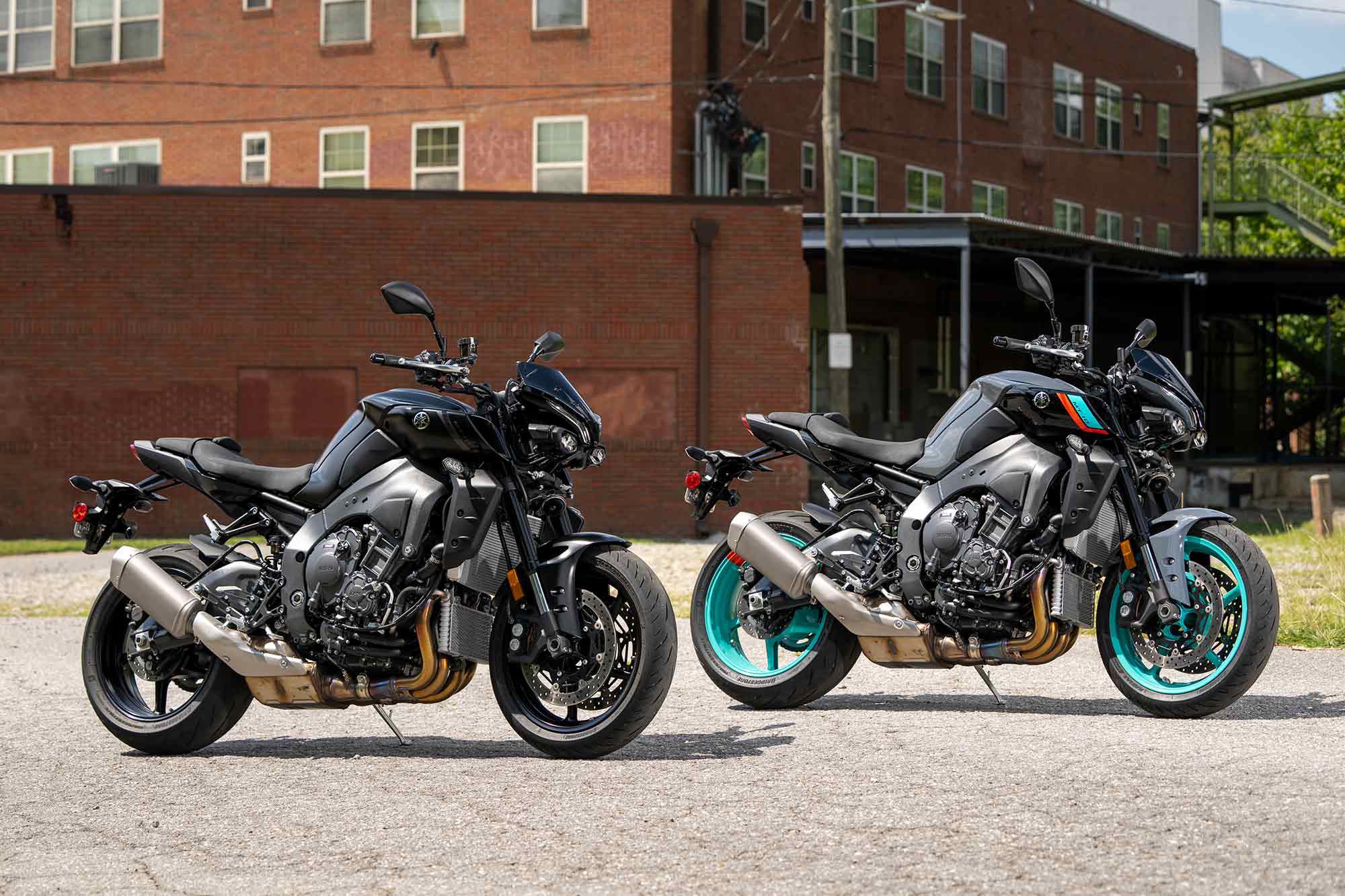
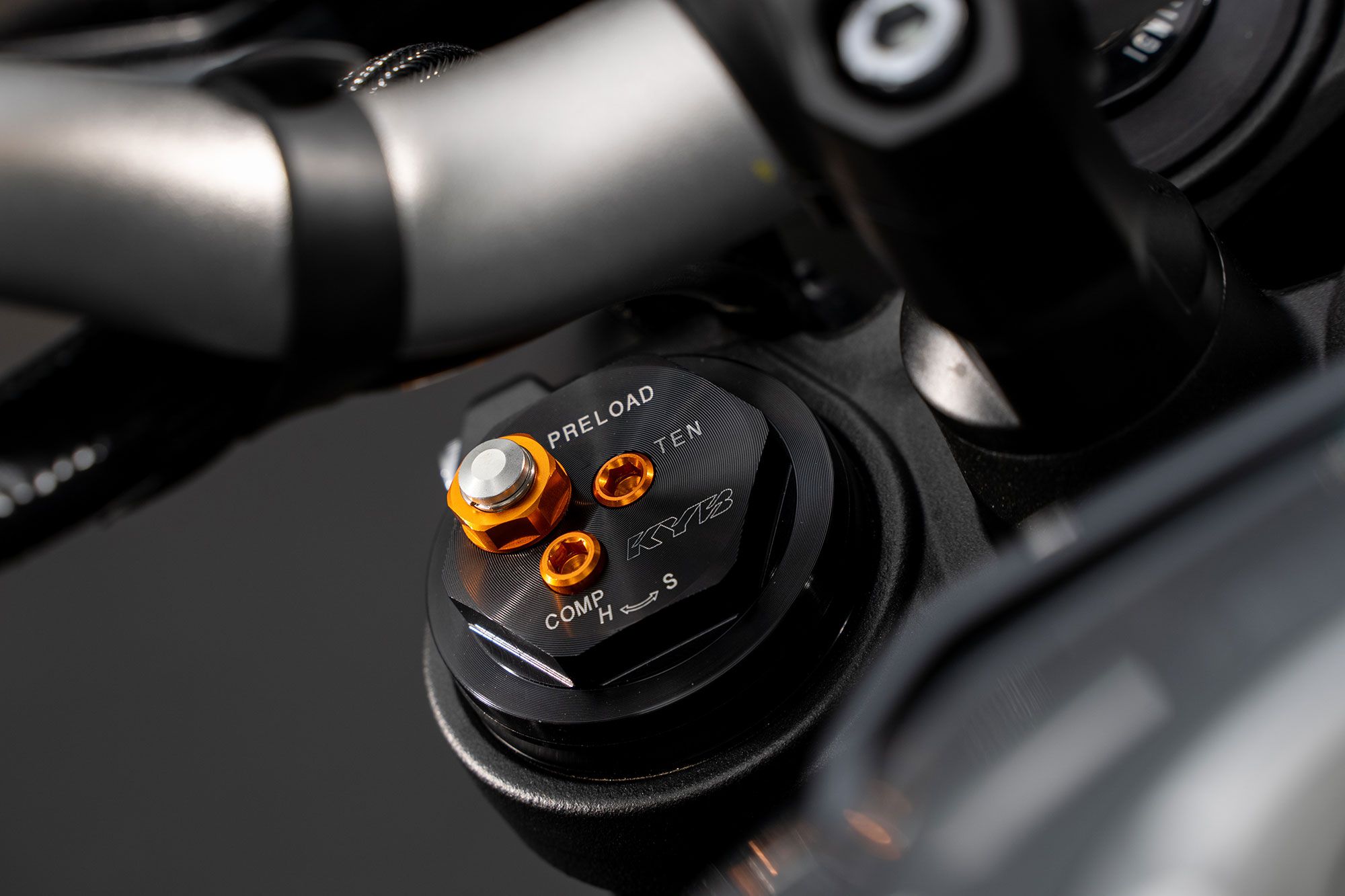
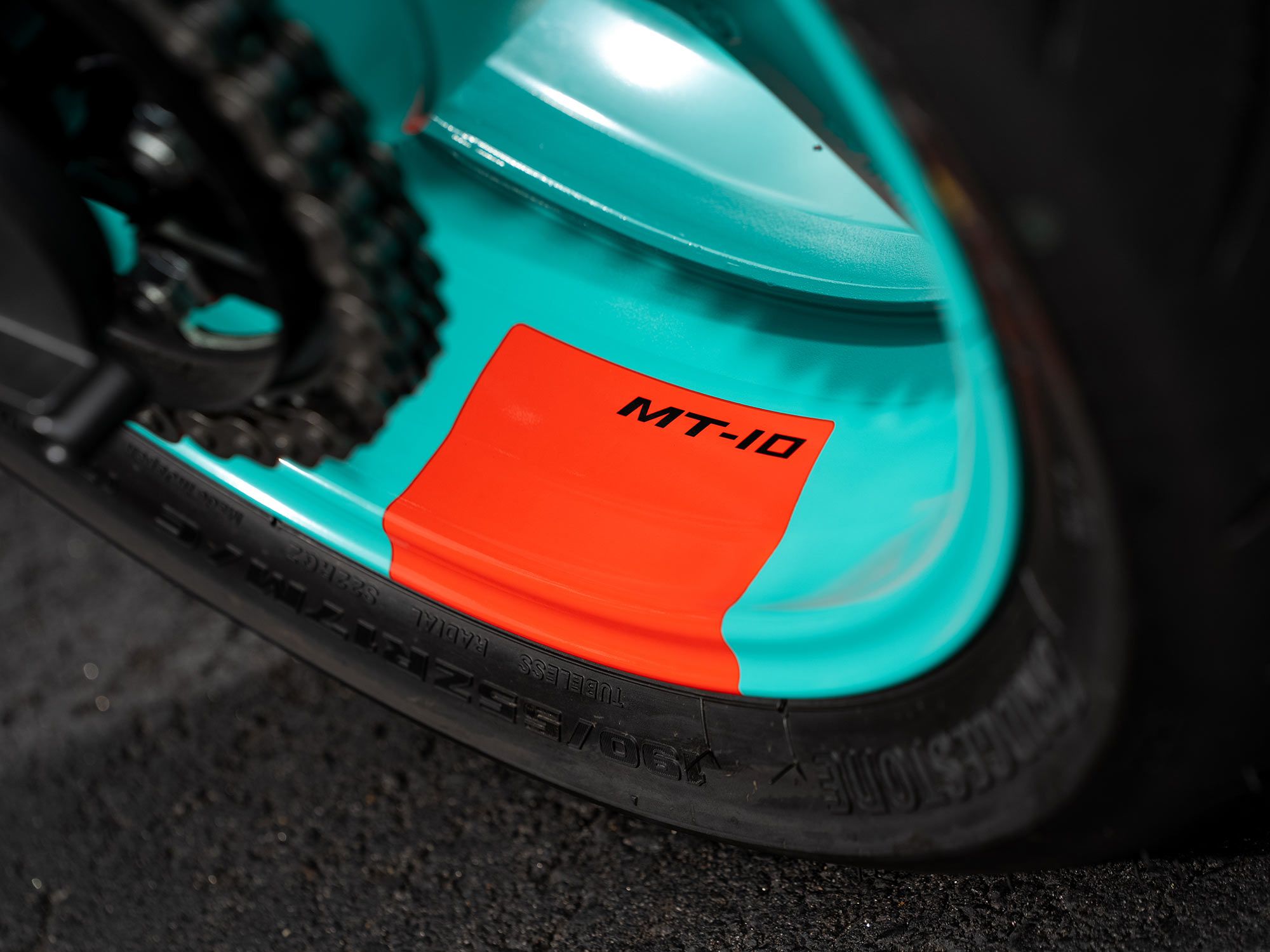
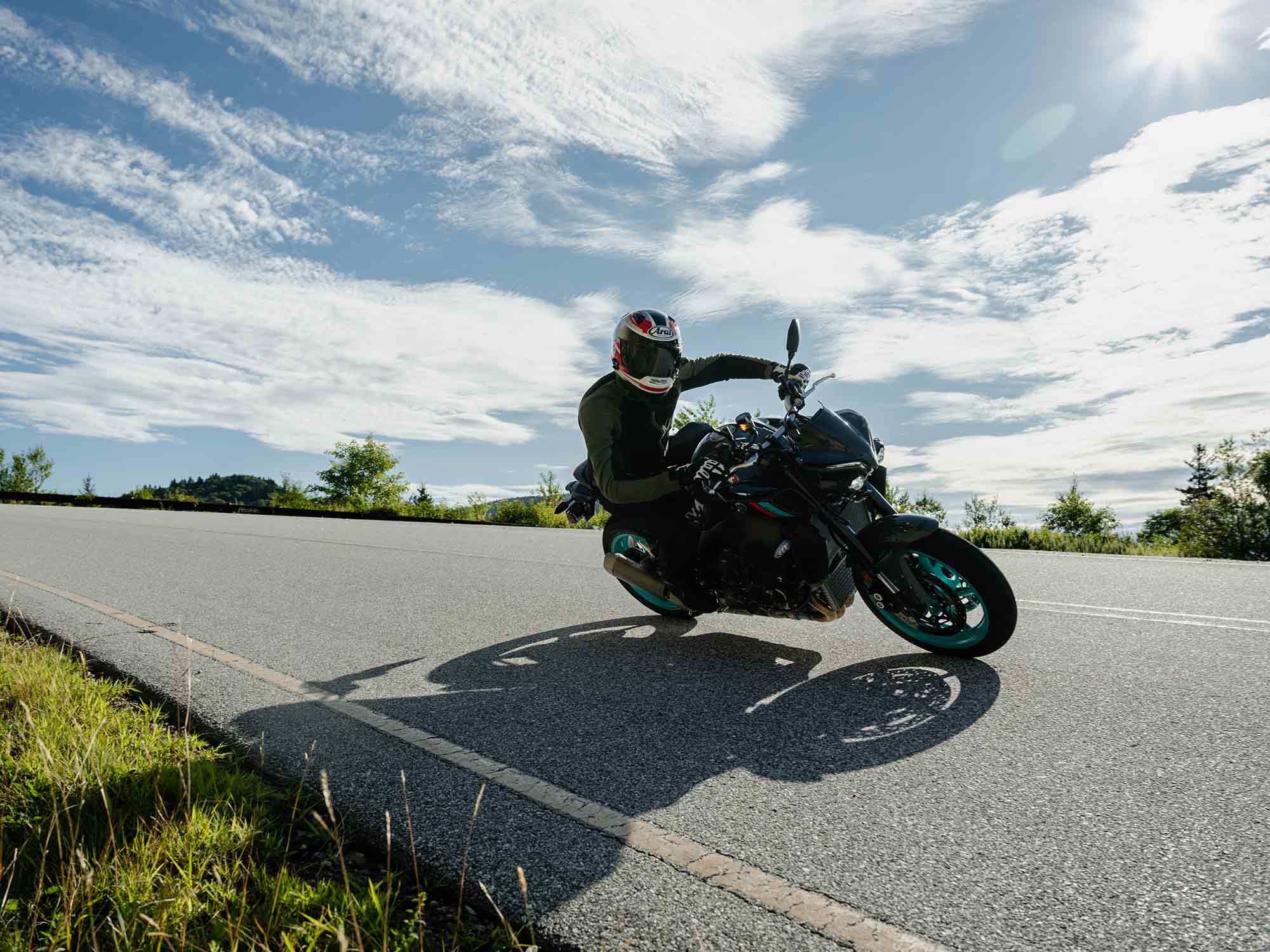
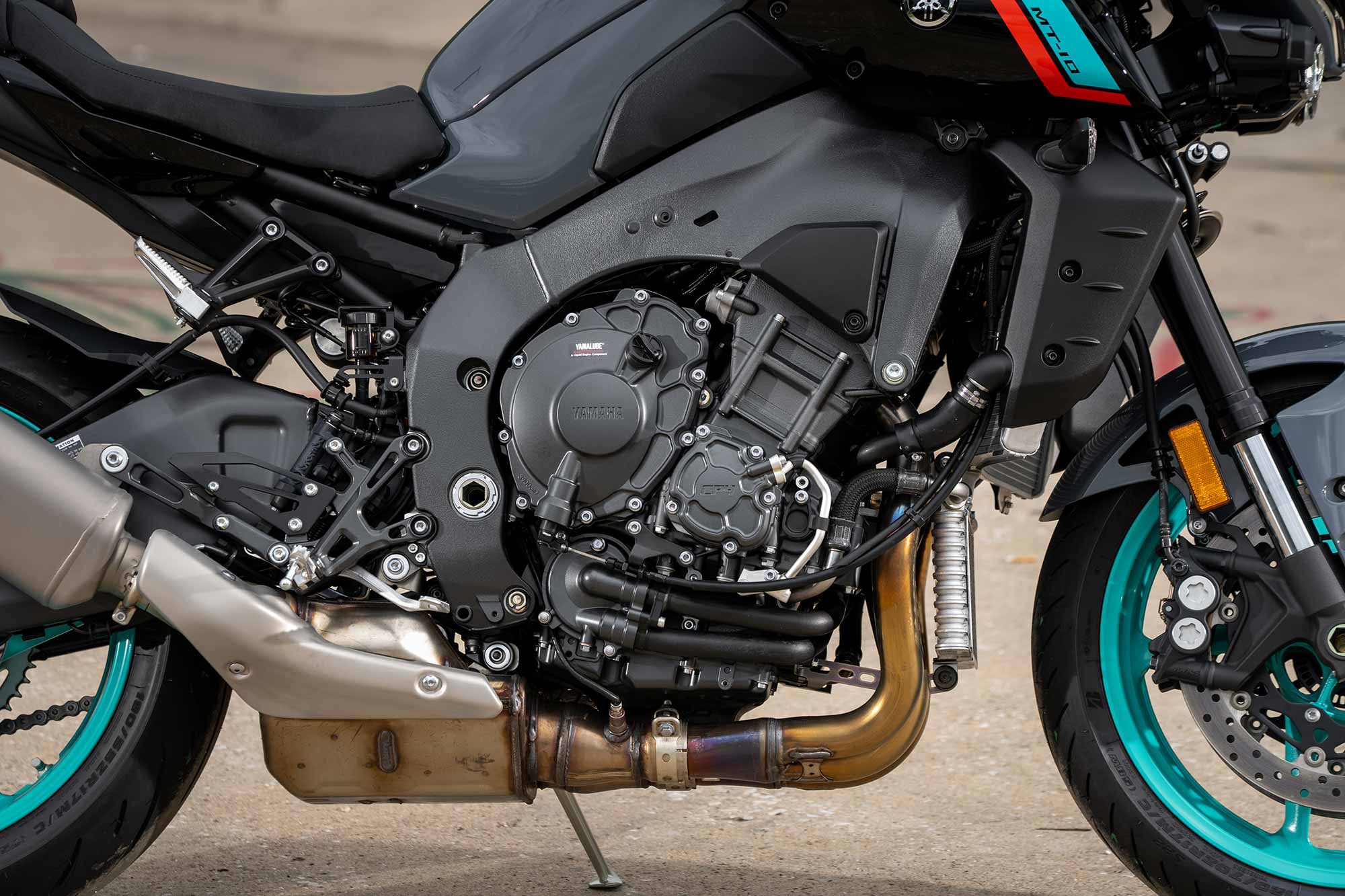
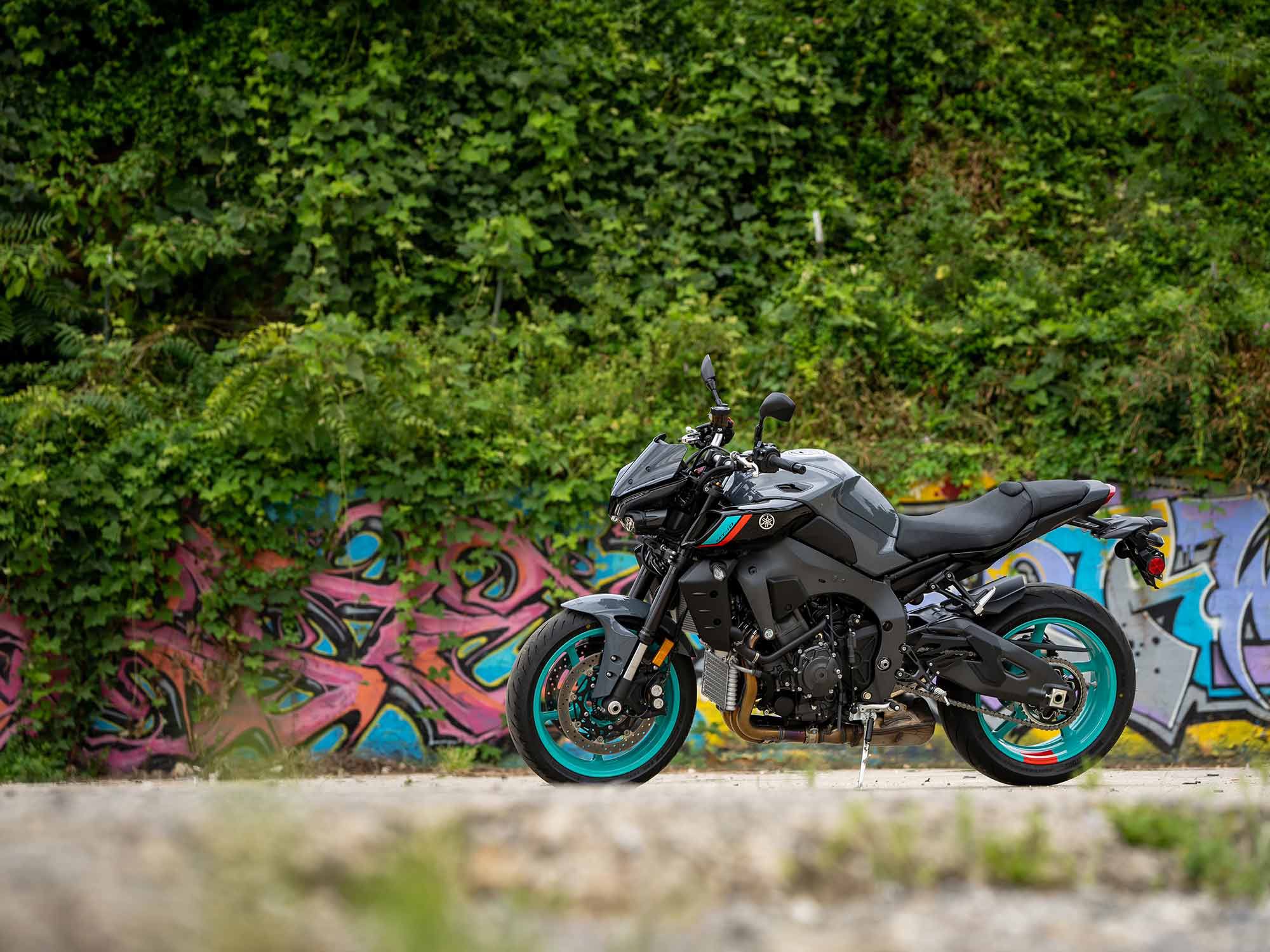
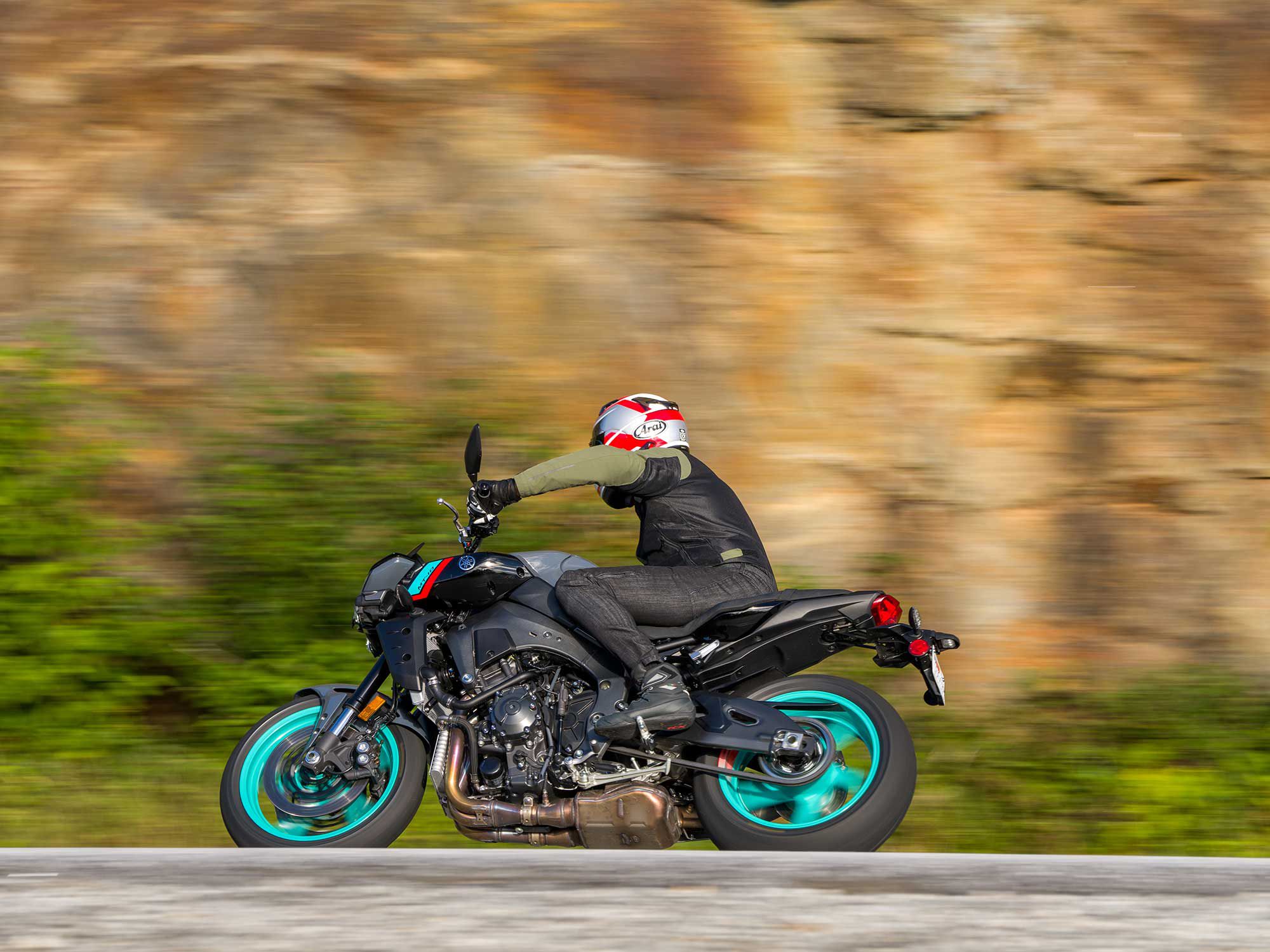
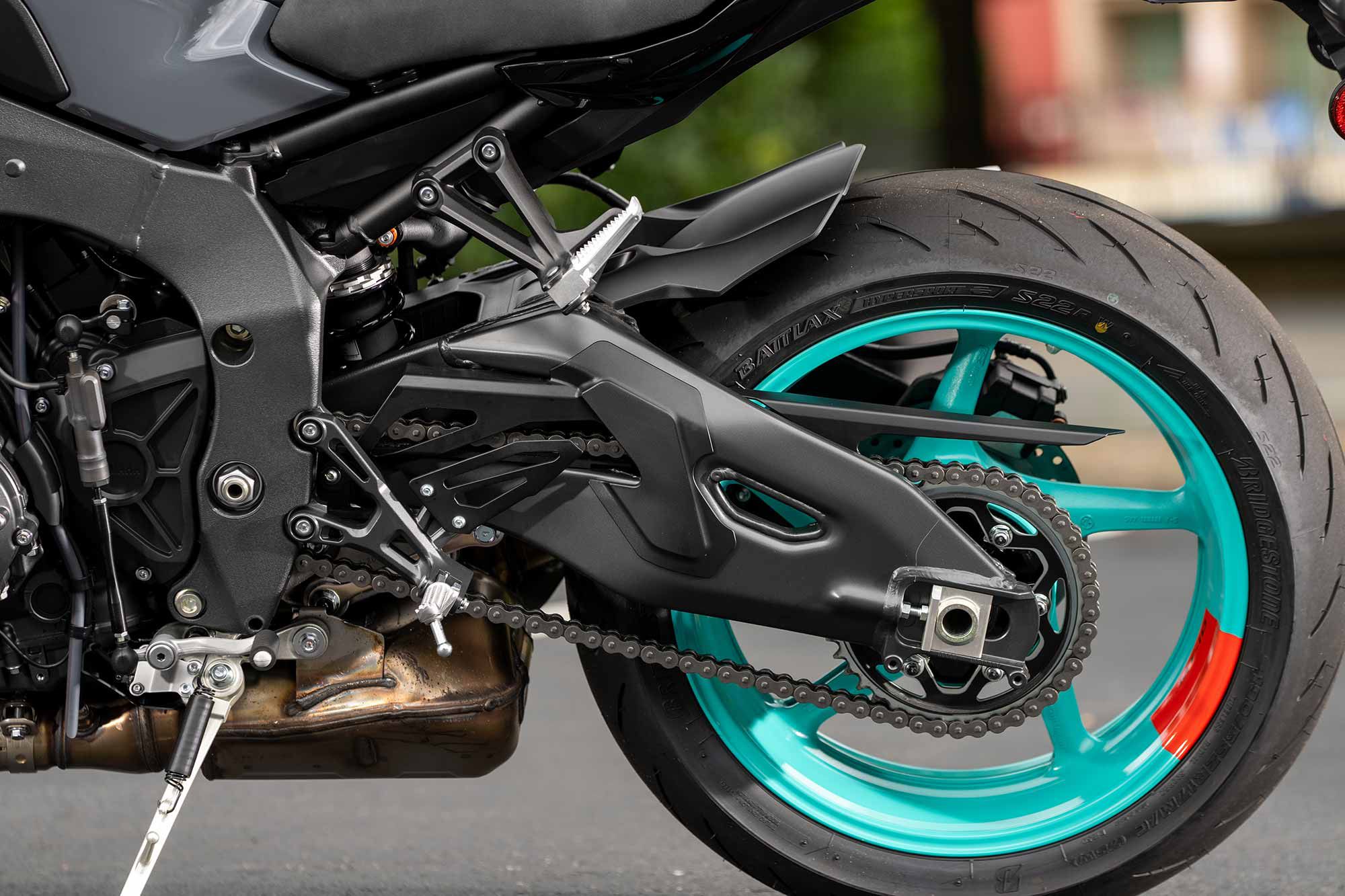
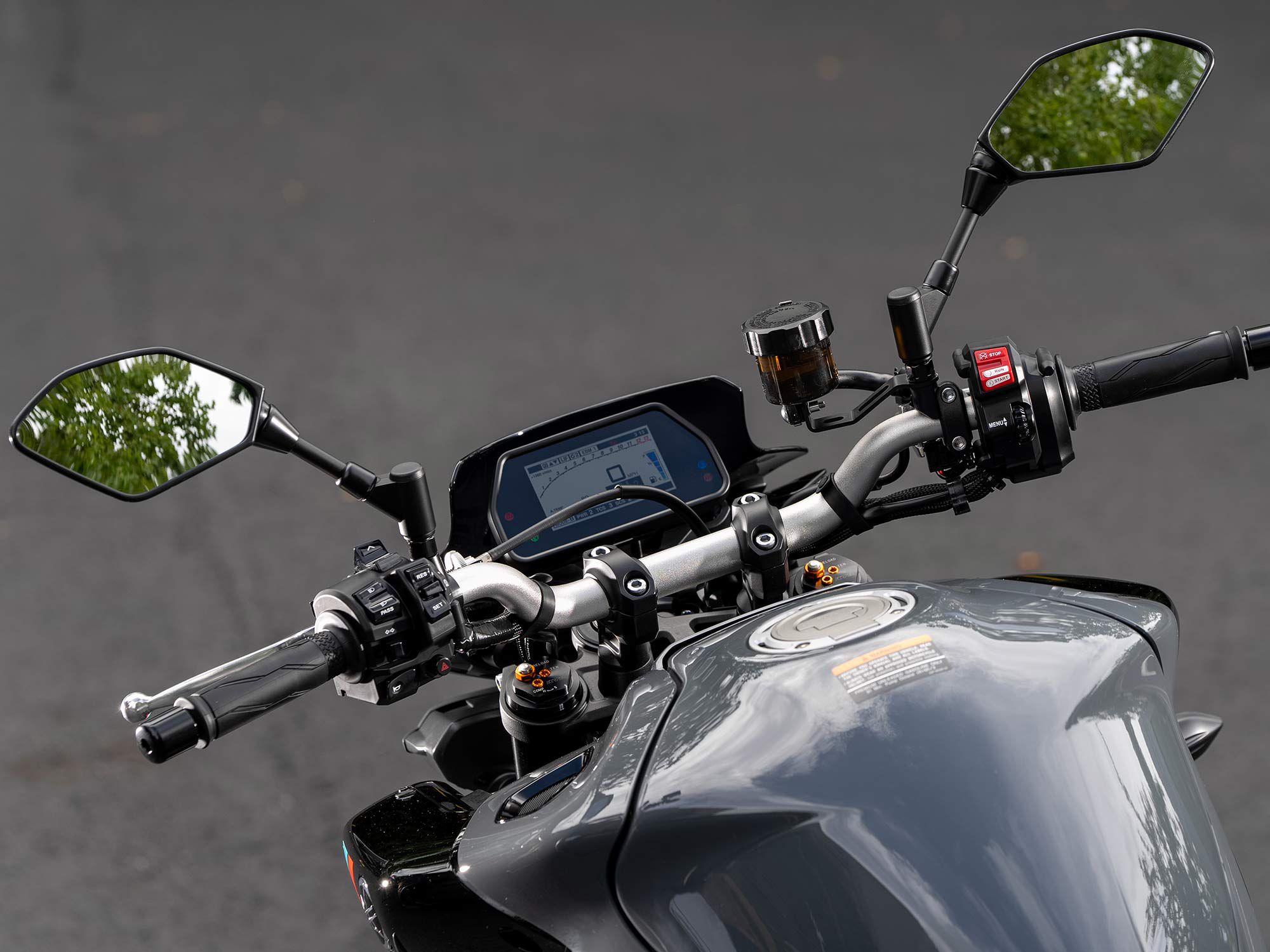
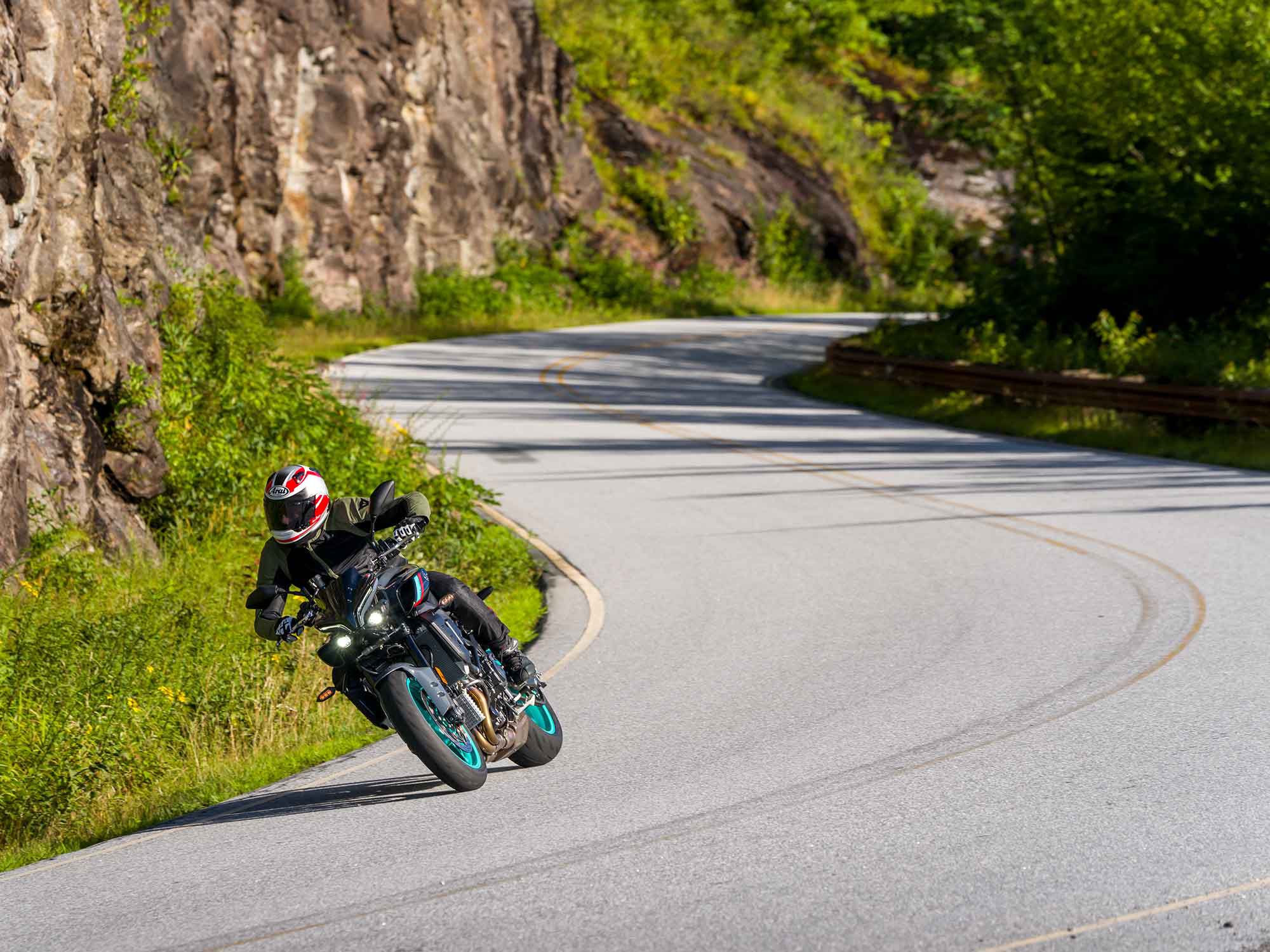
Source: MotorCyclistOnline.com
